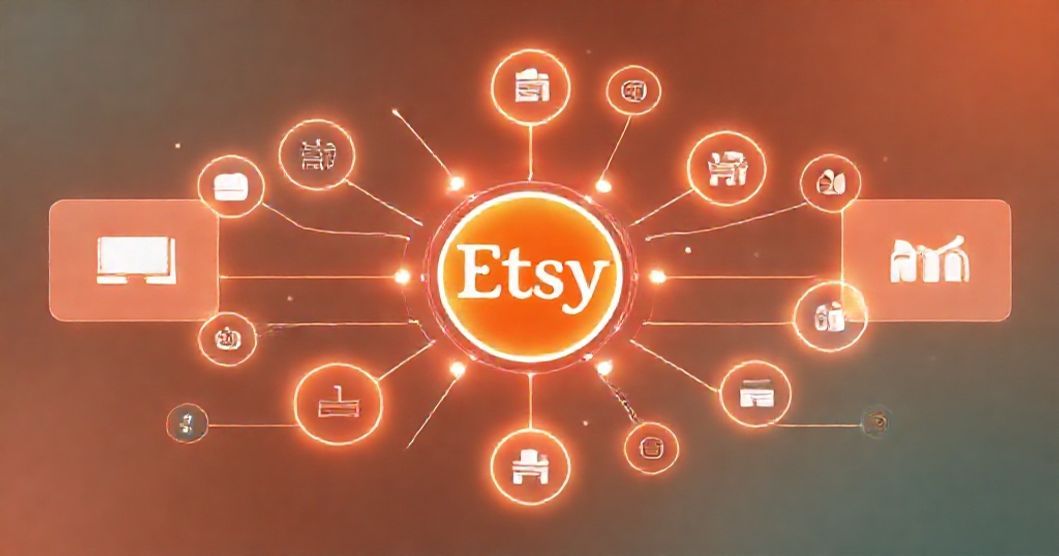In the dynamic world of e-commerce, managing an online store, especially on platforms like Etsy, demands both creativity and operational efficiency. Etsy integrations refer to the crucial process of connecting your Etsy shop with various third-party applications and services. These connections are designed to automate tasks, streamline workflows, and enhance overall business management. From inventory synchronization across multiple sales channels to automating shipping processes and financial reporting, strategic integrations are vital for sellers aiming to scale their operations and dedicate more time to product creation and customer engagement. Understanding these tools is a cornerstone for sustained growth.
Understanding Etsy Integrations: Streamlining Your Online Store Operations
Etsy integrations represent the technological bridges linking your Etsy shop to external software solutions. This fundamental practice allows sellers to consolidate data, automate repetitive tasks, and extend their operational capabilities beyond the native Etsy platform. By connecting your store to specialized tools for shipping, accounting, inventory, or marketing, you can achieve a level of efficiency that manual processes simply cannot match. This systematic approach not only saves valuable time but also significantly reduces the potential for human error, ensuring accuracy across all business functions.
Key Benefits of Integrating Etsy with Other Platforms for Growth
The advantages of adopting Etsy integrations are multifaceted, directly impacting a seller’s productivity and potential for expansion. Firstly, automation of routine tasks, such as order processing and inventory updates, frees up significant time that can be reinvested in product development or marketing. Secondly, maintaining accurate, real-time inventory levels across all sales channels prevents overselling and stock discrepancies. Thirdly, integrating with marketing platforms allows for more targeted customer outreach and relationship management. Lastly, comprehensive data insights provided by integrated reporting tools empower sellers to make informed strategic decisions.
Essential Etsy Integrations for Modern E-commerce Sellers
1. E-commerce Platform Integrations: Expanding Your Sales Reach
Integrating Etsy with other e-commerce platforms like Shopify or WooCommerce is a common strategy for sellers looking to diversify their sales channels. This allows for seamless product listing synchronization, ensuring that changes made in one place are reflected across all platforms. For instance, a handmade jewelry designer might sell unique pieces on Etsy while also offering a broader collection through a Shopify store. Such integrations help manage inventory for diverse product types, from digital downloads to physical goods, preventing stock issues and improving customer experience across all touchpoints.
2. Shipping and Fulfillment Integrations: Automating Logistics
Streamlining the shipping process is critical for customer satisfaction and operational efficiency. Integrating Etsy with shipping software such as ShipStation, Pirate Ship, or Stamps.com allows sellers to automatically import orders, generate shipping labels, and track packages in one centralized system. This not only reduces the time spent on manual data entry but also often provides access to discounted shipping rates, directly impacting profitability. These integrations are indispensable for managing high order volumes, offering various shipping options, and ensuring timely delivery.
3. Accounting Software Integrations: Simplifying Financial Management
Managing finances accurately is paramount for any business. Integrating Etsy with accounting software like QuickBooks, Xero, or FreshBooks automates the recording of sales, expenses, and taxes. This eliminates the need for manual data input, drastically reducing the chances of errors and saving countless hours during tax season. Sellers can gain a clear, real-time overview of their financial health, track profitability, and ensure compliance with tax regulations. This integration provides invaluable insights into business performance and facilitates strategic financial planning.
4. Advanced Inventory Management Systems: Real-Time Stock Control
For sellers with extensive product lines or those selling across multiple platforms, dedicated inventory management system integrations are a game-changer. Tools like Sellbrite or ecomdash provide real-time updates on stock levels, centralizing inventory data and preventing overselling. This is crucial for businesses with limited edition items, personalized products, or those dealing with raw materials for handmade goods. Effective inventory management through integration optimizes stock levels, reduces carrying costs, and ensures products are always available when customers want to purchase them.
5. Marketing and CRM Integrations: Enhancing Customer Engagement
Building strong customer relationships is key to long-term success. Integrating Etsy with marketing automation platforms like Mailchimp, Klaviyo, or CRM systems allows sellers to segment customer data, send targeted email campaigns, and manage customer interactions more effectively. For example, after a customer makes a purchase, their information can be automatically added to an email list for future promotions or feedback requests. This proactive approach helps in nurturing leads, increasing repeat purchases, and building a loyal customer base for an Etsy store.
6. Print-on-Demand (POD) Integrations: Expanding Product Offerings
Print-on-demand integrations with services like Printful or Printify are invaluable for Etsy sellers who want to offer custom designs on various products without holding physical inventory. This model is perfect for artists selling t-shirts, mugs, posters, or phone cases with their unique artwork. When an order comes in through Etsy, the integration automatically sends it to the POD provider for printing and shipping directly to the customer. This significantly reduces upfront investment and inventory risk, allowing for rapid product diversification and market testing.
Choosing the Right Etsy Integration Tool: Factors to Consider for Your Business
Selecting the most suitable Etsy integration tools requires careful consideration of several factors. Firstly, assess the specific functionality your business needs—is it primarily shipping automation, inventory sync, or financial reporting? Secondly, evaluate the cost; integration solutions can range from free basic versions to premium plans costing $10 to $100+ per month, depending on features and usage. Thirdly, consider ease of use and the learning curve involved. Scalability is also important, ensuring the solution can grow with your business. Finally, robust customer support from the integration provider is vital for troubleshooting and maximizing utility.
Maximizing Profitability Through Strategic Etsy Integrations
Strategic Etsy integrations directly contribute to enhanced profitability by optimizing various aspects of business operations. By automating tasks, sellers reduce operational costs associated with manual labor and minimize errors that could lead to returns or customer dissatisfaction. Expanding to multiple sales channels through integration increases market reach and potential sales volume. Furthermore, improved data analytics allow for better decision-making regarding pricing, product selection, and marketing spend, ultimately driving higher profit margins. The efficiency gained allows sellers to focus on high-value activities, directly impacting their bottom line.
Conclusion: Elevating Your Etsy Business with Smart Integrations
Etsy integrations are no longer a luxury but a fundamental requirement for sellers aiming for efficiency, growth, and sustained success in the competitive e-commerce landscape. By thoughtfully connecting your Etsy store with specialized third-party tools for shipping, accounting, inventory, marketing, and more, you can automate mundane tasks, reduce operational overhead, and significantly enhance customer satisfaction. This strategic approach empowers sellers to reclaim valuable time, make data-driven decisions, and focus on the creative aspects of their business, ultimately leading to a more robust and profitable online selling experience.





